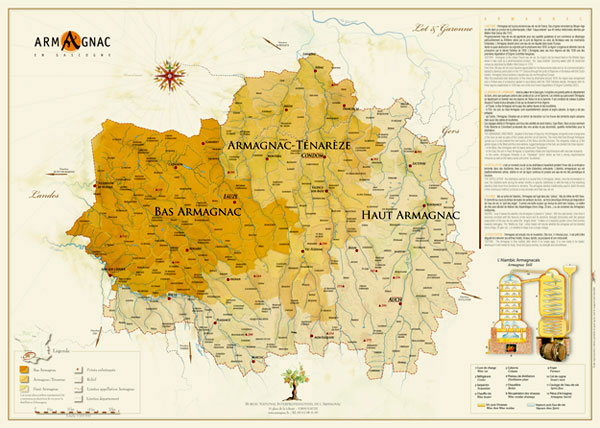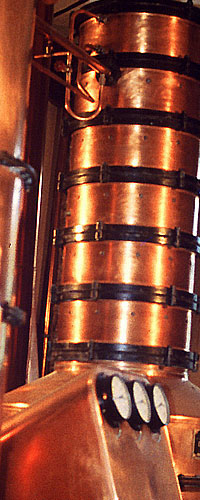Armagnacs
The Oldest French Brandy
Armagnac is born from the convergence of three cultures : the Romans who introduced the vine, the Arabs who invented the still and the Celts who brought the barrels. Armagnac is the oldest french brandy : evidence of its production goes as far back as the 14th century, preceding Cognac by 150 years. In 1310 : Prior Vital Dufour (Doctor and Ordained Cardinal) wrote : "The 40 Virtues of Armagnac".
By the end of 16th Century, Armagnac has its common place at the regional markets. In the 18th century, export of Armagnac by the Dutch through the port of Bordeaux is noted. In 1850, the Gers is the largest grape-growing region in France.
The terroirs of Armagnac :
- Bas-Armagnac, with its capital “Eauze”, extends over the Departments named “Lands” and “Gers” and represents 70% of the vineyards. The sandy and silty soil produces fruity, light delicate and highly praised eau-de-vie.
- Armagnac-Ténarèze, around the small town of Condom, covers the north-west of the Gers and the south of the Lot-et-Garonne area. It represents about 28 % of the vineyards planted for distillation. The clay/limestone soils produce rich and full-bodied spirits which reach maturity after a long period of ageing.
- Haut-Armagnac, also named “White Armagnac” due to the Limestone and Clay-limestone found in this part of the country, includes both the east of the “Gers” department along with part of the other department, “Lot et Garonne”. Developed in the 19th century when demand was high, the vines today here are represented in small plots.

Armagnac regions map
Grapes varieties : among the ten varieties authorised in the production of Armagnac, four main ones lend their character to this eau-de-vie : Baco, Ugni blanc, Folle Blanche and Colombard.
A natural vinification : the grapes harvested in October are pressed and the juice left to ferment naturally without any addition of oenological products. The wines are generally acidic and low in alcohol, giving them good conservation capacity where all the freshness and aromas are retained until distillation.
Distillation : it must be completed before March 31st of the year following the harvest. Continuous Distillation in an Armagnacais Alembic.
Ageing : after distillation the Armagnac is set to age in oak casks called “pieces”. The 400 litre casks are made from wood from the forests of Gascony and are kept in fairly humid cellars.
Watched over carefully by our cellarmaster with regards to how his brandies are developing, monitoring the amount of tannin and aromatic matter the spirit has extracted from the wood, the partial evaporation of the spirit and the consequent lowering of the alcoholic degree and the development of the aromas, produced from the wood and the wine via the gradual oxygenation of the Armagnac through the barrel. During their time in the cellar, the Armagnacs are carefully monitored, aerated and blended. With time, notes of maderization begin to develop as the colour gains depth.
Our blended Armagnacs, from Ryst Dupeyron are aged longer than those in their categories.
| Blend | Legal length for ageing | RD ageing |
| VS | 1 to 3 years | 3 to 5 years |
| VSOP | 4 to 9 years | 5 to 7 years |
| Napoleon | 6 to 9 years | 10 to 12 years |
| Hors d'Age | min 10 years | 15 to 17 years |
| XO | min 10 years | 20 to 25 years |


 Access to online shopping site
Access to online shopping site